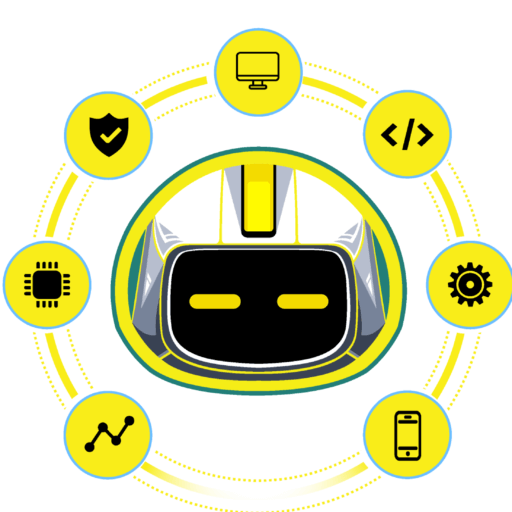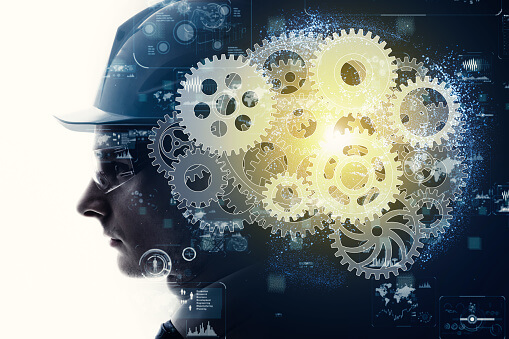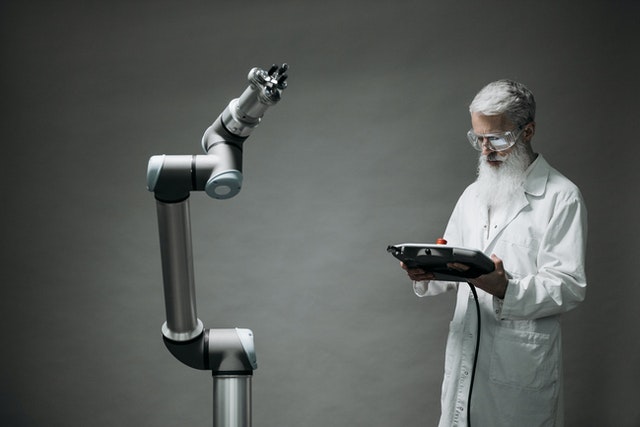What is Artificial Intelligence?
Artificial intelligence is one of the most exciting and most misunderstood technologies in development today. Types Of Artificial Intelligence. Every year, new developments in AI allow scientists to take another step toward achieving true sentience, where a machine will be able to learn on its own and make new discoveries without human intervention. It’s an exciting concept that could revolutionize the way humans live and interact with their surroundings, but it’s also something that should be approached with caution.
Types Of Artificial Intelligence
Artificial Intelligence (AI) uses to help big brands and small businesses all over the world. One reason AI is so appealing is that it can save companies a lot of money, while improving quality at the same time.
Most Fascinating Types Of Artificial Intelligence. There are many types of AI and all are useful in different ways. This article explores the most common types of artificial intelligence. Including machine learning, natural language processing, computer vision, statistical models, and hybrid intelligent systems, Artificial Narrow Intelligence (ANI), Artificial General Intelligence (AGI), Artificial Superintelligence (ASI), Limited Memory, Mind Theory.
What Is Machine Learning?
Machine learning is a huge deal right now, and it’s no wonder why. It has the potential to impact every industry in some way or another. In this article, we’ll take a look at how machine learning is being used in the world of marketing, what exactly it is, and how it can be used to create better connections with customers and more effective marketing strategies.
Machine learning is a segment of computer science gives computers the ability to learn without explicating the program. Machine learning focuses on the development of computer programs that can teach growth.
Here are our favorite Machine learning posts of 2022.
The move from reliant and manual processes to machine learning algorithms will improve the speed, accuracy and effectiveness of business processes. With this trend, computers will be able to learn on their own without the need for human intervention. In the short term, AI is going to have a great impact on the finance and banking industries.
We are already seeing signs of this happening. For example, Google’s recent experiments in self-driving cars is a good example of how artificial intelligence can come in handy in real-world situations.
The second important thing that comes with machine learning is the ability of computers to hold.
Natural Language Processing (NLP)
Natural Language Processing (NLP) is a branch of Artificial Intelligence that focuses on the interactions between computers and human (natural) languages. It often involves the processing of textual data to extract meaning. Text can be in any number of languages, and processed to identify meaningful units of speech such as sentences and also phrases, along with the names of particular people, organizations, places and events.
NLP is used in many different applications including search engines, speech recognition software, chatbots and machine translation.
More than ever, businesses are looking for ways to streamline their operations. By leveraging the power of natural language processing (NLP), companies can save their employees time and effort, while also making it easier to scale their business. In this article, we’re going to cover a few key ways that your company can benefit from the implementation of an NLP system.
Machines Reactive
Machines Reactive, the oldest forms of AI with very limited capabilities. They mimic the human brain’s ability to respond to a wide range of motives. These devices have no memory-based functionality. This means that such devices cannot use previously acquired information to inform their current actions, these devices do not have the ability to “learn.” These machines can automatically respond to a limited set or input combination. They cannot be used to rely on memory to improve their performance based on similarity.
Computer Vision
Computer vision is a branch of artificial intelligence. It is the ability for a computer to interpret information from images and video. Computer vision has been around for quite some time and it’s an important tool in the field of robotics.
Some of the biggest advancements in computer vision have been in health care, where doctors are using computers to automatically detect tumors and lesions on scans of the retina. Other advancements include being able to identify cars in photos or videos, which is important for autonomous vehicles.
It is a fascinating field, and one of its primary areas of focus is understanding the content of images. Computer vision is the process of translating data from the real world into digital information.
Computer vision software is capable of identifying faces and objects in images, as well as measuring distances between items in an image.
The software can also identify colors, point out objects that obscured other objects, and recognize handwritten text within an image.
This technology has many applications. In manufacturing it can automate quality control on a production line. In agriculture it can be used to identify pests.
Statistical models
Statistical models are mathematical representations of real-world phenomena. They’re created to simulate the process of that phenomenon and to make predictions. Statistical models are used in a wide range of fields, from economics to engineering.
Statistical models are based on a set of assumptions about how the world works and what an accurate representation of it should be like. The assumption tests for accuracy by performing a validation study. The results of the validation study will inform the development of new statistical models and also the revision of existing ones.
It is now possible to create statistical models using artificial intelligence (AI) and machine learning techniques. By applying a variety of techniques to massive amounts of data. The predictive systems used in these models are examples of AI algorithms. That require little human intervention, but the process has already compared to the human thought process.
Hybrid Intelligent Systems
Hybrid intelligent systems are a new Types Of Artificial Intelligence. They combine the latest in machine learning and deep learning to create self-learning systems. It can solve problems with minimal human input. The goal of hybrid intelligent systems is to produce an algorithm that is as good or better than humans in carrying out a task, but without any of the tedium.
The main difference between two types of AI is their ability to learn and change. Machine learning algorithms require the programmer to teach them what they need to know? And then they can only use that data to make decisions in the future.
The hybrid approach involves mixing up algorithms to create complementary solutions:
Deep neural networks are used for constructing domain-specific hypothesis classes by extracting features from raw data and also learning patterns in them.
For extracting general rules, we used traditional AI to help classify these patterns into different types of hypotheses.
Artificial Narrow Intelligence (ANI)
These Types Of Artificial Intelligence represents all existing AI, including even the most complex and capable AI ever created. Low performance intelligence refers to AI systems that can perform a specific task automatically using the same human capabilities. These machines can do nothing but what they are programmed to do, and thus have a limited or limited range of skills. According to the above-mentioned separation system, these systems are compatible with all active and limited AI memory. Even the most sophisticated AI that uses machine learning and also in-depth learning to teach itself falls under ANI.
Artificial General Intelligence (AGI)
Artificial General Intelligence is an AI agent’s ability to learn, perceive, understand, and also function fully as a person. These programs will be able to independently build more skills and create common connections across all domains, greatly reducing the time required for training. This will make AI systems more like humans by duplicating our multi-tasking skills.
Artificial Superintelligence (ASI)
The development of Artificial Superintelligence will likely set the stage for AI research. As the AGI will be the most powerful genre in the world. ASI, in addition to duplicating the multi-faceted intelligence of people, will be much better at everything they do due to greater memory, faster data processing and analysis, and the ability to make decisions. The development of AGI and ASI will lead to a situation more widely known as isolation. And while the potential for such powerful machines we have seems appealing. These devices can also threaten our lives or, at the very least, our lifestyle.
At this point, it is difficult to imagine the state of our world with the emergence of the most advanced forms of AI. However, it is clear that there is still a long way to go as the current state of AI development compared to its intended destination is still in its infancy. For those who have a negative view of the future of AI. This means that we are now very close to worrying about isolation. It is still time to ensure AI security. And for those who are optimistic about the future of AI, the fact that we simply scratched the surface of AI development makes the future even more exciting.
Limited Memory
Limited memory machines are machines that, in addition to having the power of functional machines, can also learn from historical data to make decisions. Almost all the applications we know fall under this category of AI. All modern AI programs, such as those that use in-depth learning, trained with a large amount of training data. That they keep in their memory in order to build a reference model for solving future problems. For example, image recognition AI is trained to use thousands of images and their labels to teach them to create scans. When an image is scanned by such AI, it uses training images as indicators of understanding the content of the image presented. And based on its “learning capabilities” we write new images with increasing accuracy.
Almost all modern AI applications, from chatbots and also visual assistants to self-driving vehicles are all driven by limited memory AI.
Mind Theory
Although the previous two types of AI exist and are widely available. The next two types of AI exist, at present, as a vision or ongoing work. Mental theory AI is the next level of AI programs that researchers participate in inventive innovation. AI-level theory will be able to better understand the businesses. It works with by identifying their needs, feelings, beliefs, and thought processes. Although Artificial Emotional Intelligence is already an emerging industry and an area of interest for leading AI researchers. Achieving AI-level mental theory will require development in other AI sectors as well. This is because in order to truly understand people’s needs. AI machines will also have to see people as human beings whose minds shaped by many factors. Actually “understanding” people.

















